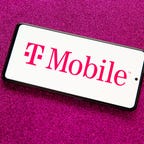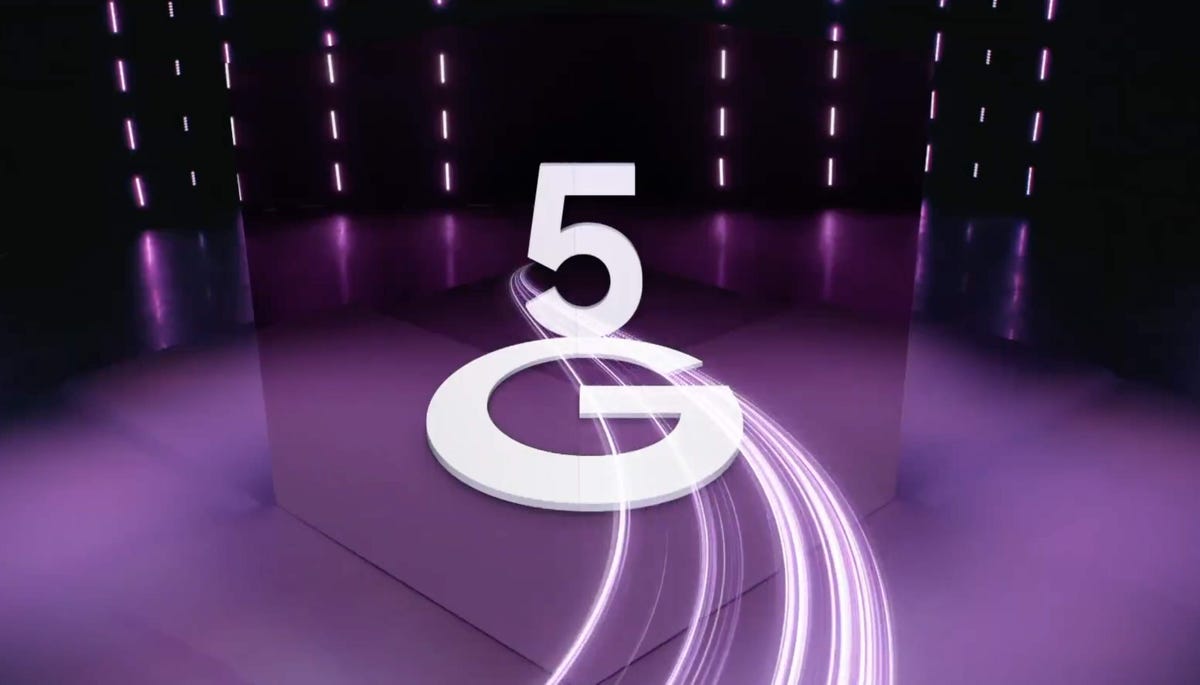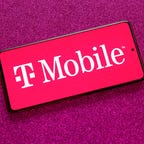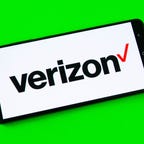
Best for value (with multiple lines)
T-Mobile Essentials Saver for 2 lines, T-Mobile Essentials for 3 or more lines
View details
It doesn’t matter whether your phone of choice is the latest iPhone or you prefer the newest Galaxy, Pixel or other Android — to get the most out of your device, you’ll need a good unlimited data plan. When it comes to finding the overall “best” unlimited plan, things can get challenging. Unlike home internet services, where your options are often limited by your location, most people living in the US have their pick of all the major competitors and carriers.
With so many different options, it can be tricky to tell which ones are actually a good value, especially since carriers love to make bold claims about performance and coverage at different prices.
I’ve covered the wireless industry for over a decade and to help you narrow down the best unlimited data plans out there, I’m going to focus on the three major carriers: Verizon, T-Mobile and AT&T; combing through the multiple postpaid unlimited plans available to find the ones that provide the most perks and value for single lines and for families of four, so you can find the best plan for you and your budget.

Know your area
Before we get to the plans, finding the best means making sure you have the coverage that you need. This makes it very hard for us to give a blanket recommendation of any one carrier. T-Mobile’s service in New York may be excellent, but if you’re in rural Iowa, Verizon is more reliable. Depending on your location and data needs, the recommendations for the best plan may vary widely.
While your mileage may vary, the good news is that these networks are growing and improving all the time, particularly as the three major players race to blanket the US with 5G. It’s quite possible that you left a network complaining about its sparse service a decade ago, but now it’s beefed up in pursuit of new customers.
If you know any friends or family in your area that already use the carrier you’re considering, ask about their experience. You could also go to a carrier’s store and see if they offer any free ways to try out the service before switching over, such as T-Mobile’s Network Pass. Verizon offers a similar 30-day “Test Drive” program, while the Cricket prepaid service has its own trial program that lets you sample parent AT&T’s network.
Know your deals and discounts
One other thing to keep in mind: discounts. All of the carriers offer additional discounts that you could be eligible for, depending on your employer, military status, student status or age.
First responders, military members, veterans, nurses and teachers can get discounts on every major carrier. Verizon has discounts for students, while T-Mobile’s Work perk could knock 15% off the monthly price of a Go5G Plus or Go5G Next plans, with AT&T offering a similar program for its Unlimited Premium plans that it calls Signature. AT&T also has a promotion for teachers that offers 25% off its latest unlimited plans.
If you’re 55 or older, you may also be eligible for a discounted plan: T-Mobile offers discounted plans nationwide for as low as $55 per month for two lines, and Verizon and AT&T offer similar options but only for Florida residents.
It’s also worth noting that some carriers, particularly Verizon (right now), sometimes advertise different rates on their websites geared toward switchers. A current promotion at the carrier offers a discount on the monthly plan, but only if you switch to Verizon and are bringing your own phone (not trading in and financing a new one on an installment plan). Our recommendations below reflect the actual rate outside of these very specific promotions.
Now, onto the best plan picks.
Best unlimited data plans of 2024
T-Mobile reshuffled its plans last year and got rid of our previous pick in this spot, the Base Essentials plan that offered a single line for $45 a month. It replaced that option with an Essentials Savings plan, a “limited time” offer of $50 a month for a single line.
It has since been renamed the plan to Essentials Saver, and although the plan is largely the same, there are some notable tweaks.
The data remains unlimited, and you now get 50GB of high-speed data, instead of the 20GB that Base Essentials offers. T-Mobile hasn’t said how long the Essentials Saver option will hang around, but we break down how it compares to the carrier’s plans here.
As before, perks like free Netflix or the bundling of taxes and fees into the sticker price aren’t included. You do get unlimited hotspots at “3G speeds” and unlimited talk, text and 2G data in Mexico and Canada.
At $50 for a single line, the Essentials Saver plan is now the same price for a single line as AT&T’s Value Plus plan, and both could be solid options for those looking for a single line without frills.
Although the price of the AT&T and T-Mobile plans are now the same, we give T-Mobile the edge here mainly because it includes hotspot access. Even at “3G speeds,” the option could be a useful feature in a pinch.
It’s also worth mentioning that T-Mobile allows for multiple lines on this plan, with two lines running for $80 a month. (If you need three or more, you may want to look at one of T-Mobile’s other plans, which could be cheaper thanks to various promotions the carrier regularly runs.)
You may need to click “see more plans” and then “explore Essentials Saver plan” on T-Mobile’s site to get this option to appear, though lately, the carrier has been showing it alongside its other offerings.
Mint Mobile offers Unlimited premium wireless plans starting at $30/month when you purchase a 3-month plan. All Mint plans come with unlimited talk and text, high-speed data, free 5G on the Nation’s largest 5G network, free mobile hotspot, and free calling to Mexico and Canada. You can use your own phone with any Mint Mobile plan and bring your phone number, along with all your existing contacts. Switching to Mint Mobile is easy with helpful videos and articles that walk customers through the process. And for those with eSIM compatible devices, you can make the switch within minutes of purchasing a Mint plan.
Like its rivals, AT&T recently gave its plans a slight reshuffling and as well as some slight price hikes. Its cheapest Value Plus plan has been rebranded as “Value Plus VL” and could be the way to go if you need one line. You get unlimited talk, text and data and 5G access. There are no perks like a free streaming service subscription or hotspot data. Also new in the updated plan is the ability to add multiple lines to this plan should you need it, although all will need to be on Value Plus VL.
If all you need is a simple unlimited plan from your phone, this is around a dollar cheaper than T-Mobile’s Essentials Saver, $15 cheaper than AT&T’s Unlimited Starter (with this plan including 3GB of hotspot data) and $14 cheaper than Verizon’s Unlimited Welcome.
Because of T-Mobile’s restructuring of its cheapest plans, this has gotten a bit more complicated. As mentioned above, both T-Mobile Essentials and Essentials Saver include unlimited talk, text and data for all the carrier’s base unlimited plans, including 5G access.
In short, if you need two lines, Essentials Saver is your best pick, while those looking for three or more lines may want to go with regular Essentials.
Two lines of Essentials Saver run $80 a month, while a similar offering from Verizon costs $110 per month and a similar deal from AT&T runs $120 a month. Three lines will also run $90 at T-Mobile for its regular Essentials thanks to a promotion, compared with $120 at Verizon (for Unlimited Welcome) and $135 at AT&T (for Unlimited Starter). The four-line option is now back to $100 at T-Mobile, thanks to a new promotion, compared with $120 at Verizon and $140 at AT&T.
For those comparing prices on multiple carriers’ websites, it’s worth keeping in mind that Verizon’s pricing by default factors in a switching promotional discount of $180 over three years for Unlimited Welcome or $540 if you’re getting Unlimited Plus. In both cases, it’s also assuming you aren’t getting a new phone when you switch.
To get the real numbers of Verizon’s plans make sure to add $5 per line to its Welcome prices and $15 per line for Plus. Our pricing above removes the Bring Your Own Device credit. Our pricing here also assumes no perks from Verizon.
As for T-Mobile, its prices also come with a couple of caveats: Unlike the carrier’s Go5G or Magenta plans, taxes and fees aren’t included in any of these Essentials prices, making the final total a little higher. All the deals also require that you set up AutoPay and paperless billing.
As mentioned, you may need to click “see more plans” and then “explore Essentials Saver plan” on T-Mobile’s site to get this option to appear if it doesn’t show up right away alongside the carrier’s other plans.
Verizon’s updated plans have replaced the carrier’s previous Welcome Unlimited offer with one named Unlimited Welcome. While the names are flipped, the core offer is still largely the same: There are no streaming perks like the Disney Bundle with this plan, no hotspot data and you can’t hop on Verizon’s fastest 5G networks (which it calls Ultra Wideband). You do get Verizon’s network for $120 a month for four lines, assuming you have automatic payments set up.
If you switch to Verizon and bring your own phone the carrier will give you $180 back over 36 months. This amounts to a $5 monthly savings and is why the carrier’s website may show you different pricing.
Compared with the competition, the Verizon plan is still $15 a month pricier than T-Mobile’s Essentials Savings plan for a single line, but it’s $20 a month cheaper than AT&T’s most affordable Unlimited Starter plan for a family of four. Those looking to save even more can combine the Welcome plan with Verizon’s other discounts for teachers, nurses, military and first responders.
This is a bit more complicated. Verizon used to be our pick with its Play More plan that bundled in the Disney Bundle (ad-free Disney Plus, ESPN Plus and Hulu with ads) and services like Google Play Pass or Apple Arcade into the plan’s sticker price.
Now the carrier has updated its wireless plans to remove perks like the Disney Bundle or Apple Arcade and Google Play Pass from being automatically included with its service. Even with its new plans, it’s still our pick for best perks, but this will require a bit more explanation.
Instead of automatically putting services in, it now offers a variety of perks at $10 per month, per perk, allowing users to pick and choose what they want. It also now allows its lower-cost plan — Unlimited Welcome — to participate.
Unlimited Welcome runs $65 per month for one line or $120 per month for four lines. You get unlimited talk, text and data but you don’t get access to Verizon’s fastest 5G networks (what it calls “5G Ultra Wideband”) or hotspot data. For that, you will need to step up to its pricier Unlimited Plus plan ($80 for one line, $180 for four lines).
Both the Welcome and Plus plans include the ability to add perks at that $10 per month rate. This includes the Disney Bundle (normally $15 per month), Apple One individual (normally around $17 per month), Apple Music Family (which can be shared with five people and normally runs $17 per month) and Walmart Plus (normally $13 per month, but also includes Paramount Plus Essential).
Other perks are available, including an additional 100GB of hotspot data (normally $45 per month), 2TB of Verizon’s cloud storage (normally $15 per month), three days of international data (what the carrier calls TravelPass — normally $10 per day).
All perks can be turned on or off at will, and you could forgo them entirely. You can even go with multiple perks on a single line if you want.
Whether this makes sense for your situation may require some time with a spreadsheet going through what services work for you and what you’re willing to pay for them. The savings could add up if you’re paying for some of these services directly, but it also could be more expensive than your existing plan.
It is also worth mentioning that Verizon allows you to “mix and match” lines, so if not everyone needs the faster 5G connectivity they could be on Unlimited Welcome while the one who does can go on Unlimited Plus.
AT&T allows something similar with its unlimited plans but at the moment, it no longer offers any streaming perks. To get T-Mobile’s perks, everyone has to be on the same plan.
If you wanted a cheaper way to save on one or two services like the Disney Bundle, you could have four lines for $120 per month, add the Disney perk for $10 and pay $130 per month for the whole package.
You can also combine these plans with Verizon’s other discounts for teachers, nurses, military and first responders to save a bit more.
T-Mobile’s new plans are also a bit complicated. For most people, T-Mobile’s Magenta and Magenta Max options are the better pick when it comes to looking for perks for one or two lines. They are cheaper than the new Go5G options and have most of the same features, except with a cheaper monthly rate ($70 for one line on Magenta, $120 for two lines and $85 for one line on Magenta Max, $140 for two lines).
You get less hotspot and international data with a Magenta plan compared to a Go5G option, and Magenta Max users also don’t get the same ability to upgrade to a new device after two years while taking advantage of T-Mobile’s “new customer” deals.
Thanks to T-Mobile offering a free third line on its Go5G options, those plans become cheaper and a better value compared to the Magentas if you need three or more lines.
Among the benefits of Magenta and Go5G ($75 per month for one line, $155 per month for four lines) are unlimited international data (albeit at slow “2G speeds”) when traveling in over 210 countries, an hour of in-flight Wi-Fi on a number of airlines and T-Mobile Tuesdays weekly giveaways and six free months of Apple TV Plus. T-Mobile will also include Netflix’s $15.49-a-month Standard with Ads plan (which allows for 1080p HD streaming on up to two screens at once), but you need to have at least two lines of Magenta or Go5G to be eligible.
Its pricier Magenta Max ($85 a month for one line, $200 a month for four lines) and Go5G Plus ($90 a month for one line, $185 a month for four lines) plans keep the Netflix subscription (even if you only have one line), includes a full subscription to Apple TV Plus, ups the hotspot data from 15GB on Go5G to 50GB per month on Go5G Plus, adds 5GB of high-speed international data and gives you unlimited Wi-Fi on a host of flights including those from American, Alaska Airlines, Delta and United. Go5G Plus also has 15GB of high-speed data in Canada and Mexico, compared to 10GB on Go5G.
T-Mobile’s priciest Go5G Next ($100 per month for one line, $225 per month for four lines) plans also now include Hulu (with ads). This plan also lets you upgrade your phone every year, although unless you really want Hulu or a new device you are probably better off on Go5G Plus.
Unlike its Essentials plans discussed earlier, T-Mobile also includes taxes and fees with the pricing of all of its Magenta and Go5G plans.
AT&T’s unlimited plans no longer have much in the way of perks. The carrier used to offer a free subscription to Max with its top Unlimited Elite offering ($85 for one line, $50 a month if you have four lines), but it got rid of the option in early June 2022.
It is also worth reiterating that carrier perks — like Verizon and the Disney bundle or T-Mobile’s offerings of Netflix, Paramount Plus, ViX Plus and Apple TV Plus — are often limited to one subscription per account, not one for each line you have.
Picking a wireless plan and carrier is a very individualized process. What works for you and your family’s needs may be vastly different from your friends or neighbors. Even geographically, some areas have better AT&T coverage while others work best on Verizon or T-Mobile (and vice versa). The picks we make are based on over a decade of covering and evaluating wireless carriers, their offerings and overall performance.
Since choosing a provider is unique, we focus on larger plans and the value they provide; as well as calling out ways you can test the different networks in your area for yourself so you can make the best pick.
Read more: Best Streaming Service Deals
Is unlimited data really unlimited?




